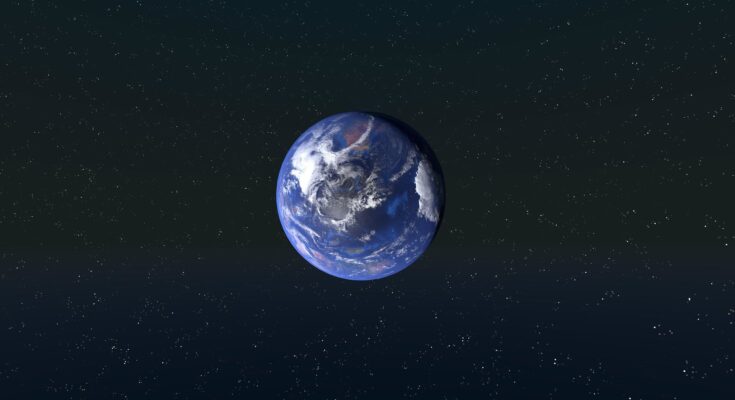The melting of the polar ice caps is making our planet spin at a slower speed, effectively increasing the length of a day on Earth and increasing the effects of climate change, a new study claims.
The study, published yesterday (Monday, July 15) in Proceedings of the National Academy of Sciences, concludes that water flowing from Greenland and Antarctica is increasing the mass around the equator, co-author Surendra Adhikari of NASA’s Jet Propulsion Laboratory told AFP.
“It’s like when a figure skater does a pirouette, first holding her arms close to her body and then stretching them out,” added co-author Benedikt Soja of ETH Zurich. “The initially fast rotation becomes slower because the masses move away from the axis of rotation, increasing physical inertia.”
Our planet is often depicted as a sphere, however, an accurate description of its shape would be an “oblate spheroid”, which swells slightly around the equator.
Its shape is also in constant flux, brought on by the impact of the daily tides that affect the oceans and crusts, and longer term phenomena such as the movement of tectonic plates, and sudden shifts caused by earthquakes and volcanoes.
Days on earth and how they have been affected
The study employed observational methods such as Very Long Baseline Interferometry, which helps scientists measure the difference in how long it takes for radio signals from space to reach various points on Earth, which is then used to infer variations in our planet’s position and the length of its day.
The paper also tells us that a Global Positioning System was used to measure Earth’s rotation very accurately, to around one-hundredth of a millisecond, and even checking with ancient eclipse records.
If it is the case that the Earth rotates more slowly, then the length of a day increases by a few milliseconds from the standard measure of 86,400 seconds.
At present, there is a much stronger force slowing the rotation of the Earth – the gravitational pull of the Moon. Our planet’s satellite pulls on the oceans in a process called “tidal friction”, which has brought about a steady deceleration of 2.40 milliseconds per century over millions of years.
However, the new paper reaches the conclusion that if our species carried on emitting greenhouse gases at the rate it is now, the effect of climate change will be harsher than that of the Moon’s pull by the end of the 21st century, Adhikari told AFP.
From 1900 to the present day, climate has brought about a change wherein days are about 0.8 milliseconds longer. But, in the worst-case scenario for high emissions, climate alone would be responsible for lengthening days by 2.2 milliseconds by the year 2100, using the same baseline.



